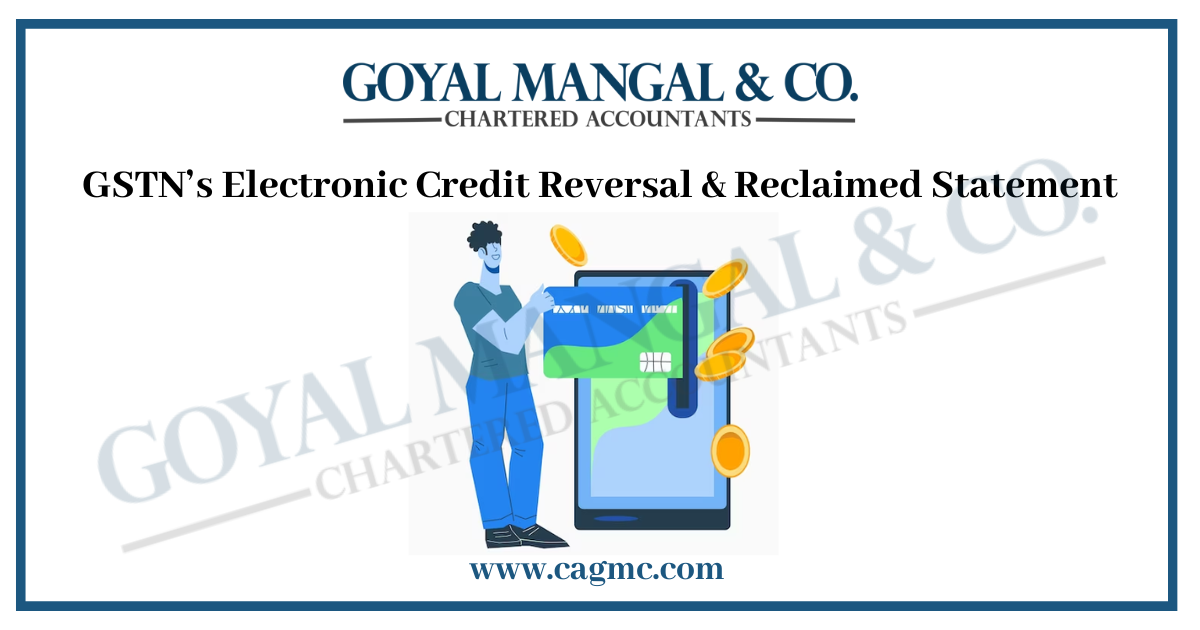
Goods and Services Tax (GST) has transformed the taxation system in various countries, and so does in India. It aims for an efficient concept and more transparent to charging taxes. One of the main elements within the GST structure is the GST Network (GSTN), a technological infrastructure that plays a vital role in the administration of GST. In this article, we explore Electronic Credit Reversal and Reclaimed Statements form an essential concept, influencing how enterprises manage and utilize Input Tax Credits (ITC).
Table of Content
Electronic Credit Reversal: Unravelling the Basics
Electronic Credit Reversal is a fundamental term within the GST structure. It is created to mention the particular conditions where previously claimed ITC require to be reversed. Exploring Electronic Credit Reversal includes understanding the significant implications and triggers associated with the process.
- Goods and services non-usage: The primary reason for Electronic Credit Reversal happens during the goods or services for which ITC claimed are not in use for business objects. Through this time, the credited amount should be reversed and make sure the businesses enjoy tax merits for goods and services, which contribute directly to their economic performances.
- Default in payment: Another crucial setoff for Electronic Credit Reversal is payment default. In case a taxpayer is unable to make payment to suppliers within 180 days of the transaction, the ITC claimed on a specific transaction is subject to ITC reversal. This technique promotes timely payments, fostering a healthier financial ecosystem.
- Implications for entities: Entities are required to assess their usage of goods and services for business objectives before claiming ITC. Failure can cause subsequent ITC reversals.
- Compliance and rectification: Knowing the Electronic Credit Reversal is not only about compliance as it offers entities an opportunity for rectification. In case, for any reason, goods and services initially claimed as non-usable are later put to business use. Businesses can rectify the condition by filing of reclaimed statement.
Reclaimed Statement: Navigating the Path to Rectification
The Reclaimed statement is an important component in the GST structure, by providing businesses a strategic pathway to rectify and reclaim ITC, which was initially reversed. Here are two circumstances for a reclaimed statement:
- Settlement of payment default: In case the taxpayer settles the outstanding payment to the supplier within 180 days, the ITC that was initially revered because of default in payment can be reclaimed by the Reclaimed statement.
- Rectification of non-usage: The Reclaimed statement comes, when goods and services, are initially claimed as non-usable and later put into business use. Entities can rectify the condition by filing a Reclaimed statement, and making sure that they receive the tax credits rightfully applicable to their economic performances.
There are basic steps to file a Reclaimed statement:
- Documentation and verification, lead to reclaiming ITC;
- Accessing the GSTN Portal;
- Submit the rectified information such as payment settlement; and rectified usage.
- Real-time updates and tracking.
The Role of GSTN: Empowering Seamless Compliance
The GSTN stands for the GST ecosystem, playing a crucial role in empowering enterprises and businesses with techniques for seamless compliance. The role of GSTN becomes instrumental in making sure transparent and efficient compliance procedure:
- Technological backbone: GSTN provides a user-friendly online portal, which offers a centralized hub for taxpayers. This portal is a doorway for several GST-related activities such as making payments, filing returns, and managing Electronic Credit Reversal and Reclaimed Statement.
- Filing and management of statements: GSTN provides the management and filing of Electronic ITC Reversal and Reclaimed statements.
- Integration with other systems: It integrates the other taxation and financial methods that promote a seamless flow of details between several businesses.
- User Support: GSTN performs a helpdesk to address concerns and queries raised by taxpayers.
- Data security: GSTN makes sure about the secure framework for handling sensitive taxpayer data. This leads to data security is significant for managing the confidentiality and integrity of financial details.
- Educational resources: It provides educational resources, such as tutorials and instructions, to manage businesses and evaluate the GST structure.
Conclusion
In conclusion, the GSTN Electronic ITC Reversal and Reclaimed statement are significant for the entity’s purpose for compliance with the GST structure. As businesses grip on the technological mechanisms offered by GSTN, they not only bond to legal needs but also optimize their usage of ITC. This meticulous understanding brings a more transparent and efficient taxation system, and positions businesses to thrive with the evolving landscape of GST laws.


